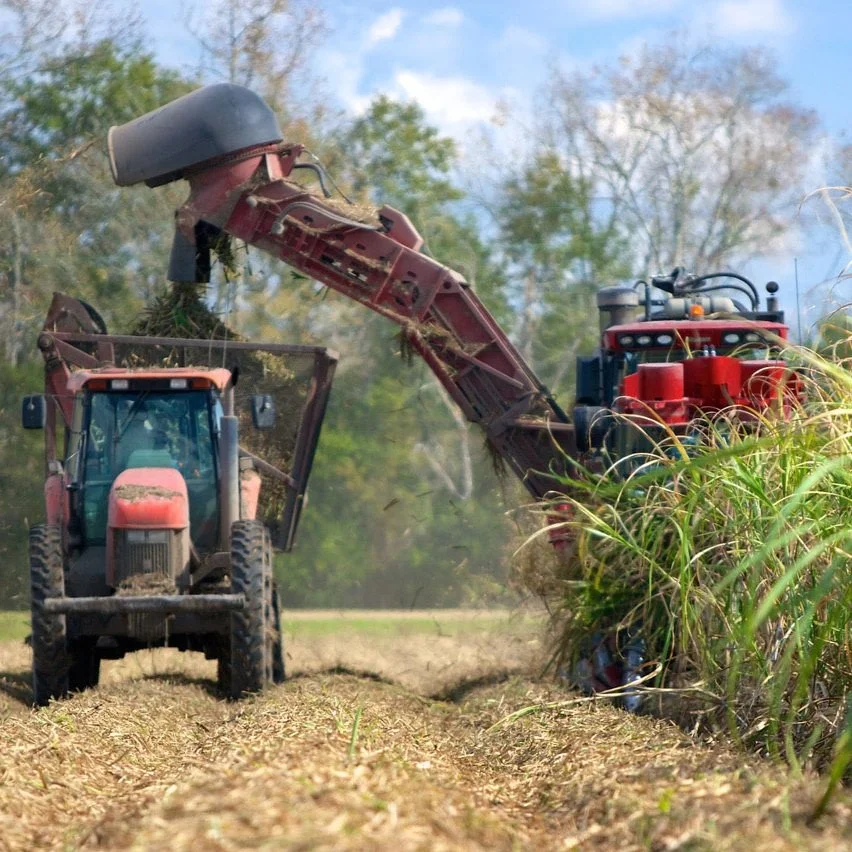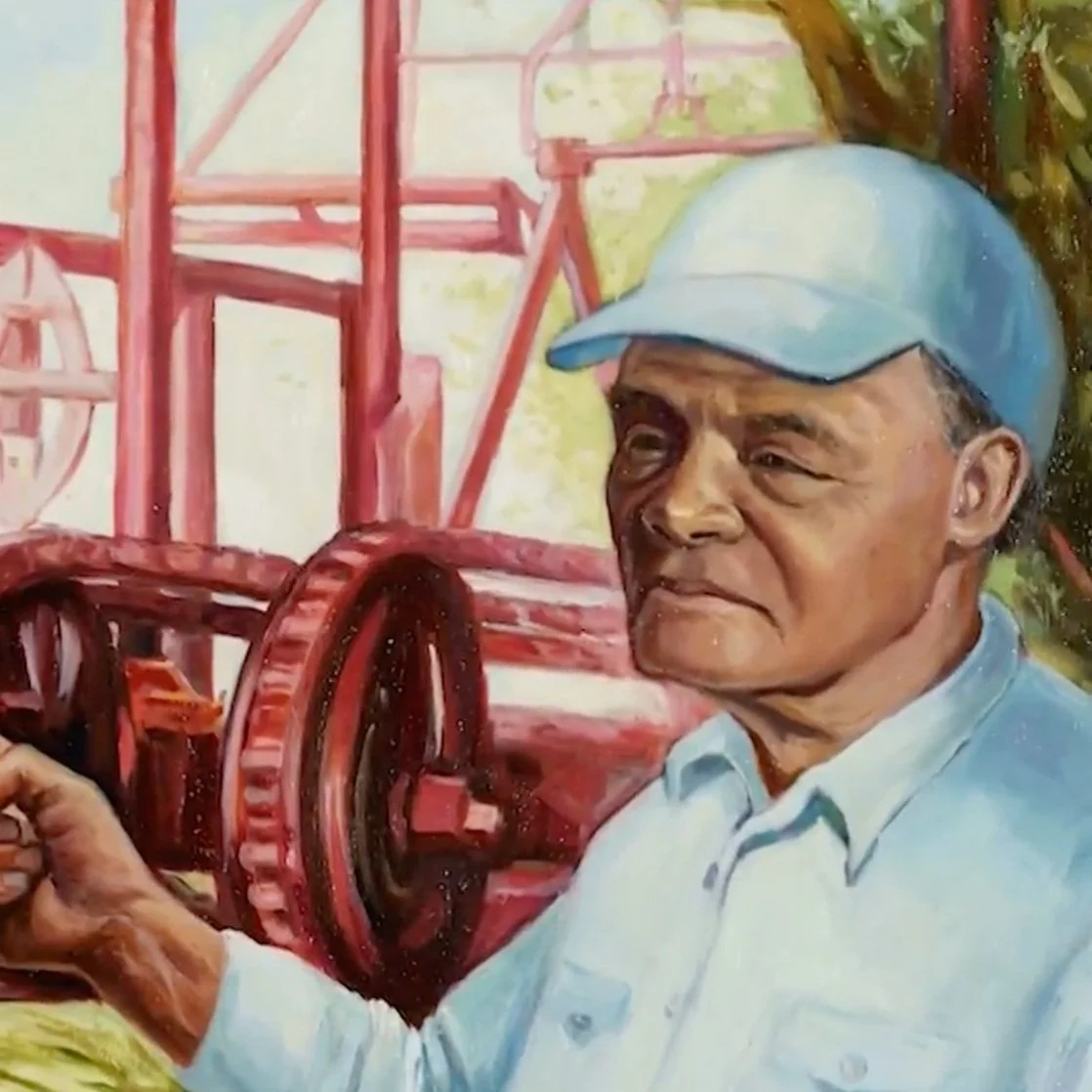The efficacy of 3 adjuvants combined with a standard rate of insecticide applied for sugarcane borer (SCB) control was compared with untreated controls in second ratoon sugarcane (HoCP 00-950) in 2023 at the USDA-ARS Sugarcane Research Unit Ardoyne Farm in Schriever, Louisiana. Plots consisted of 3, 60-ft rows, with 4 replications assigned using a RCBD. All insecticide applications used the insecticide Vantacor (FMC) at a rate of 1.2 fl oz/acre and were applied when the infestation reached the threshold level (3% of stalks with SCB larvae present in leaf sheaths) on 29 June 2023.
Read MoreSugar workers who are members of the International Association of Machinists were recently on Capitol Hill talking about how a strong U.S. sugar policy supports union jobs across the country. We’re proud that much of the sugar made in America is done so by a union workforce.
“U.S. sugar policy provides so much opportunity for people in the rural communities,” said Cornelius Fowler, a truck driver for Florida Crystals with 16 years’ experience on the job. “They have great benefits, great programs that allow individuals that want to further their career.”
Read MoreLouisiana’s sugar farmers and millers have been producing a reliable source of America’s favorite ingredient for centuries but so have our foreign competitors.
Our producers thrive in the face of adversity. We grow a profitable crop in nine months while the rest of the world has the luxury of a twelve-month growing season. We are some of the most efficient producers in the world and believe our farmers can compete with any farmer in the world.
Read MoreA long-time veteran of the U.S. Department of Agriculture (USDA), Casey Bean will join the American Sugar Alliance (ASA) as the organization’s trade consultant on May 1. Bean will work with ASA to analyze the complex global trade issues that impact U.S. sugar farmers and shape America’s no-cost sugar policy.
With more than thirty years of experience working with the USDA’s Foreign Agricultural Service (FAS), Bean’s work at FAS spans multiple regions across the globe including the countries of Bolivia, China, Colombia, Ecuador, Japan, Pakistan, Peru, and Venezuela.
Read MoreThe Louisiana sugarcane industry has persevered for more than 225 years, even though it is a tropical crop is growing in a temperate environment. Growers regularly face a challenging climate, which includes the threat of early winter freezes before the crop is harvested. An early freeze can kill the sugarcane plant and cause the sugar (sucrose) inside of the stalk to deteriorate. Another challenge is the short seven-to-10-month growing season.
Read MoreThe domestic production of sugar in the U.S. originates from sugarcane harvested in Florida, Louisiana, and Texas and sugarbeets harvested across the Upper Midwest, Central Plains, Mountain states, Pacific Northwest, and California.
Sugarcane is harvested from October to March and sugarbeets are harvested in the late summer through fall, except for California where sugarbeets are harvested in the spring through the summer.
Read MoreRecently the Food and Agriculture Policy Research Institute (FAPRI) at the University of Missouri released their outlook for U.S. agriculture. They project that American sugar production remains strong and is expected to grow, despite challenges we have seen over the past couple years including factory closures in Sidney, MT, and Santa Rosa, TX.
“Despite new and existing challenges, the forecast is bright for American sugar production as long as the farmers’ safety net is strengthened,” said Dr. Rob Johansson, Director of Economics and Policy Analysis at the American Sugar Alliance.
Read MoreIn a pocket of central Louisiana, a surprising crop for that area is taking root — sugarcane.
Sugarcane, a tropical crop, has traditionally been limited to south Louisiana. But by using precision breeding techniques, LSU AgCenter researchers are developing sugarcane varieties that can withstand colder temperatures.
Read MoreTrycera herbicide from Helena Agri-Enterprises has received federal registration from the U.S. Environmental Protection Agency (EPA) for use in sugarcane. Trycera is the first triclopyr product to be approved for use in the crop. It offers sugarcane growers a new tool to control Divine nightshade and other problematic weed species, pending approval by state regulatory agencies.
Read MoreUSDA is struggling to manage sugar supplies amid soaring domestic and international prices and a drought that continues to devastate Mexican growers, slashing the amount they can export to U.S. food and candy manufacturers.
Read MoreDespite 2023’s drought, Louisiana’s landowners, sugarcane producers and millers continue to have confidence in sugarcane in 2024.
Kenneth Gravois, the LSU AgCenter sugarcane specialist, is not surprised.
Read MoreThe nation’s sugar farmers are in Washington, D.C. this week as part of the American Sugar Alliance annual fly-in. Patrick Frischhertz, a member of the American Sugar Cane League National Legislative Committee and a Louisiana farmer, says the event helps Congress know what’s important to the sugar industry.
Read MoreRio Grande Valley Sugar Growers Inc. recently announced it is closing after 51 years in business, citing dwindling water for irrigation and an ongoing dispute with Mexico over water supplies.
The closure will result in layoffs of 435 employees, including 101 company truck drivers, for the sugar-growing operation and mill based in Santa Rosa, Texas. The mill’s closure will be finalized by April 29.
Read MoreLouisiana's sugar cane production is booming.
Despite a severe drought, the state's 2023 harvest produced more than 1.8 million tons of sugar. The number of acres of sugar cane harvested has been increasing over the past few years, as has the tons of sugar per acre, due to more sugar-intense varieties.
It's not just Louisiana.
Read MoreThe River Road African American Museum in Donaldsonville holds important pieces of Louisiana history. The organization maintains a former Rosenwald school and one of the first sugarcane planting machines created by two Black men.
In the early 1900s, education wasn’t easily accessible for everyone. By the middle of the century, two prominent Black men had created dozens of schools in the South, one of which is now in Donaldsonville.
Read More














